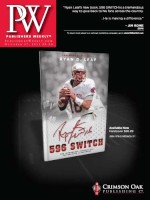The National Book Award committee has unfurled a typically iconoclastic list of finalists, sidestepping the big names of the year—Didion, Harbach, Eugenides—in favor of debuts, smaller presses, lots of biographies, and lots of looking back. If there’s anything unifying the titles—or the adult titles, at least—it’s mood and focus: they’re overwhelmingly about the past and overwhelmingly about societies in the grip of transition and individuals in the grip of history. They’re books about hard times (is it any wonder these are the books speaking to us now?) and books that perhaps presage trends (PW has already covered the nonfiction finalist, The Convert, published by Graywolf, in a piece about midlist authors moving to smaller presses).
Some books look at the past—and some books from the past, it turns out, never quite leave us. Nathaniel Philbrick, himself a National Book Award winner in 2000 for In the Heart of the Sea, has a new book out this week—Why Read Moby-Dick?—and it got us thinking about how certain books seem to excite other books, albums, paintings into being (c.f., our children’s list, which features no fewer than three spinoffs of the 1697 French fairy tale and political allegory Le Maitre Chat, ou Le Chat Botté, aka Puss in Boots). The artist Matt Kish, who also has a Moby-Dick–inspired book out this week—Moby-Dick in Pictures: One Drawing for Every Page—shares his illustrations with us, and our Alex Crowley contributes an essay on how heavy metal led him to Melville’s classic.
For more on Matt Kish, the artist behind the illustrations above, click Drawing Board: Matt Kish.



 Volume 258
Issue 42
10/17/2011
Volume 258
Issue 42
10/17/2011





